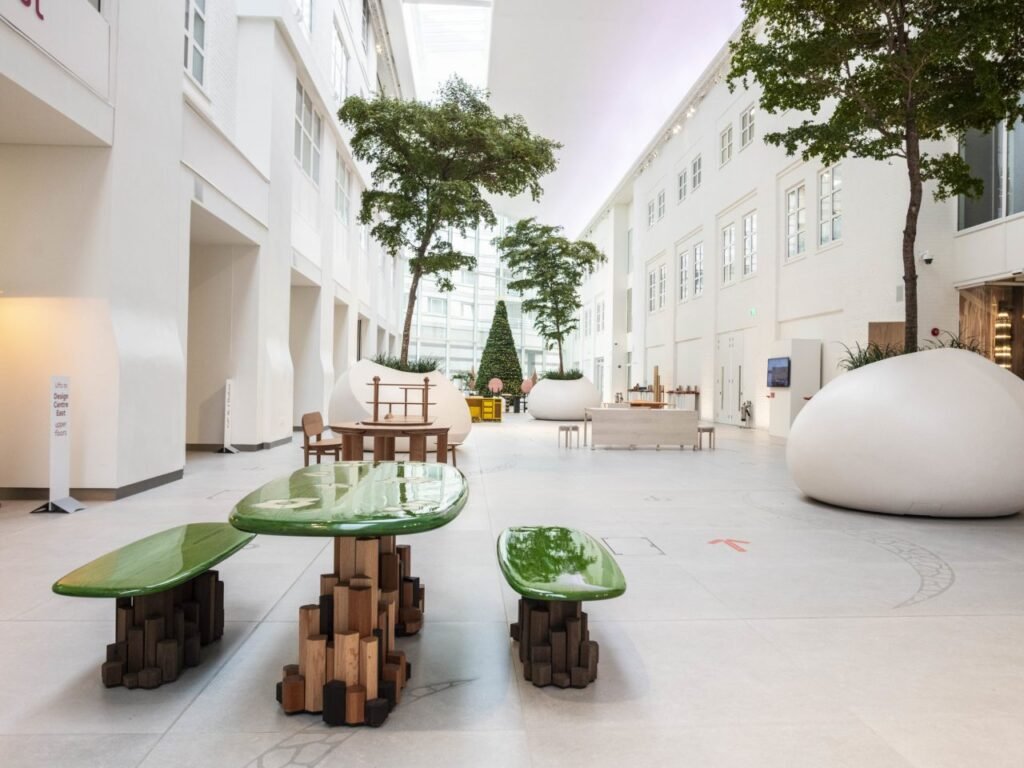E-state Nirman Nigam Design Centre in the District Of Bhadohi
E-state Nirman Nigam A design center, also known as a design studio or design hub, is a collaborative space where professionals from various disciplines come together to conceptualize, innovate, and create designs for products, services, or experiences. These centers serve as hubs for creativity, exploration, and problem-solving, bringing together designers, engineers, marketers, and other stakeholders to work towards a common goal In All over district of Bhadohi.

In this comprehensive exploration of design centers, we will delve into various aspects including their purpose, key components, organizational structure, processes, challenges, and the impact they have on innovation and business success. We will also examine examples of prominent design centers In E-state Nirman Nigam and their contributions to design excellence.
Purpose of Design Centers:-
Design centers serve multiple purposes, including:
1.Innovation: Design centers foster a culture of innovation by providing a conducive environment for creative exploration and experimentation.
2.Collaboration: They facilitate collaboration among multidisciplinary teams, enabling cross-functional collaboration and knowledge sharing.
3.Design Excellence: Design centers aim to achieve design excellence by leveraging the collective expertise of designers, engineers, and other professionals.
4.User-Centric Design: They focus on understanding user needs and preferences to create products and experiences that resonate with the target audience.
5.Brand Differentiation: Design centers play a crucial role in shaping the brand identity and differentiating products and services from competitors.
6.Speed to Market: By streamlining the design and development process, design centers help accelerate time-to-market for new products and innovations.
Key Components of Design Centers:
Design centers typically consist of the following key components:
1.Physical Space: A well-designed physical space equipped with tools, resources, and amenities to support collaboration and creativity.
2.Cross-Functional Teams: Multidisciplinary teams comprising designers, engineers, researchers, marketers, and other stakeholders.
3.Design Tools and Technologies: State-of-the-art design tools, software, and technologies to facilitate the design process.
4.Prototyping Facilities: Prototyping labs or workshops equipped with tools and equipment for rapid prototyping and testing.
5.Design Library: A repository of design resources, reference materials, case studies, and best practices to inspire and inform the design process.
6.Presentation Areas: Spaces for showcasing design concepts, prototypes, and presentations to internal teams and external stakeholders.

Organizational Structure:
The organizational structure of design centers varies depending on factors such as the size of the organization, the industry, and the design center’s objectives. However, common structures include:
1.Design Leadership: Headed by a Chief Design Officer (CDO) or Vice President of Design, responsible for setting the design vision and strategy.
2.Design Teams: Comprising designers, researchers, engineers, and other specialists organized into cross-functional teams.
3.Support Functions: Support functions such as operations, finance, and HR provide administrative support to the design center.
4.Collaboration with Business Units: Design centers often collaborate closely with business units such as product development, marketing, and R&D to align design efforts with business objectives.
5.External Partnerships: Design centers may collaborate with external partners such as design agencies, universities, and research institutions to leverage additional expertise and resources.
Processes and Methodologies:
Design centers employ various processes and methodologies to drive innovation and creativity. Some common approaches include:
1.Design Thinking: A human-centered approach to innovation that emphasizes empathy, ideation, prototyping, and testing.
2.Agile and Iterative Design: Agile methodologies such as Scrum and Kanban are often used to enable iterative and collaborative design and development.
3.User Research and Testing: Design centers conduct user research and usability testing to gain insights into user needs, behaviors, and preferences.
4.Prototyping and Rapid Iteration: Rapid prototyping allows designers to quickly create and test design concepts, gather feedback, and iterate based on user input.
5.Cross-Functional Collaboration: Design centers promote cross-functional collaboration and co-creation, bringing together designers, engineers, marketers, and other stakeholders to work towards a common goal.

Challenges and Considerations:
Design centers face several challenges and considerations, including:
1.Balancing Creativity and Constraints: Designers must balance creative freedom with practical constraints such as budget, timelines, and technical feasibility.
2.Stakeholder Alignment: Ensuring alignment and buy-in from stakeholders across the organization can be challenging, particularly in large and complex organizations.
3.Talent Acquisition and Retention: Recruiting and retaining top design talent is crucial for the success of design centers, but it can be competitive in today’s market.
4.Measuring Impact: Measuring the impact of design on business outcomes can be challenging, requiring robust metrics and analytics.
5.Managing Change: Design centers often require organizational buy-in and cultural change to fully integrate design thinking and practices into the organization.
Impact of Design Centers:
Design centers have a significant impact on innovation, business success, and customer satisfaction. Some key impacts include:
1.Innovation: Design centers drive innovation by fostering a culture of creativity, experimentation, and collaboration.
2.Competitive Advantage: Organizations with strong design capabilities gain a competitive advantage by delivering superior products and experiences that resonate with customers.
3.Brand Loyalty: Well-designed products and experiences enhance brand loyalty and customer satisfaction, leading to repeat business and positive word-of-mouth.
4.Market Differentiation: Design-driven organizations differentiate themselves from competitors by offering unique and compelling products and experiences.
5.Business Growth: Design centers contribute to business growth by accelerating time-to-market, reducing costs, and increasing revenue through innovative products and services.
Design centers can vary in size, scope, and focus, depending on the industry and the organization’s objectives. Some design centers may be dedicated to specific areas such as automotive design, fashion design, or digital product design, while others may have a broader focus, covering multiple disciplines in E-state Nirman Nigam.


